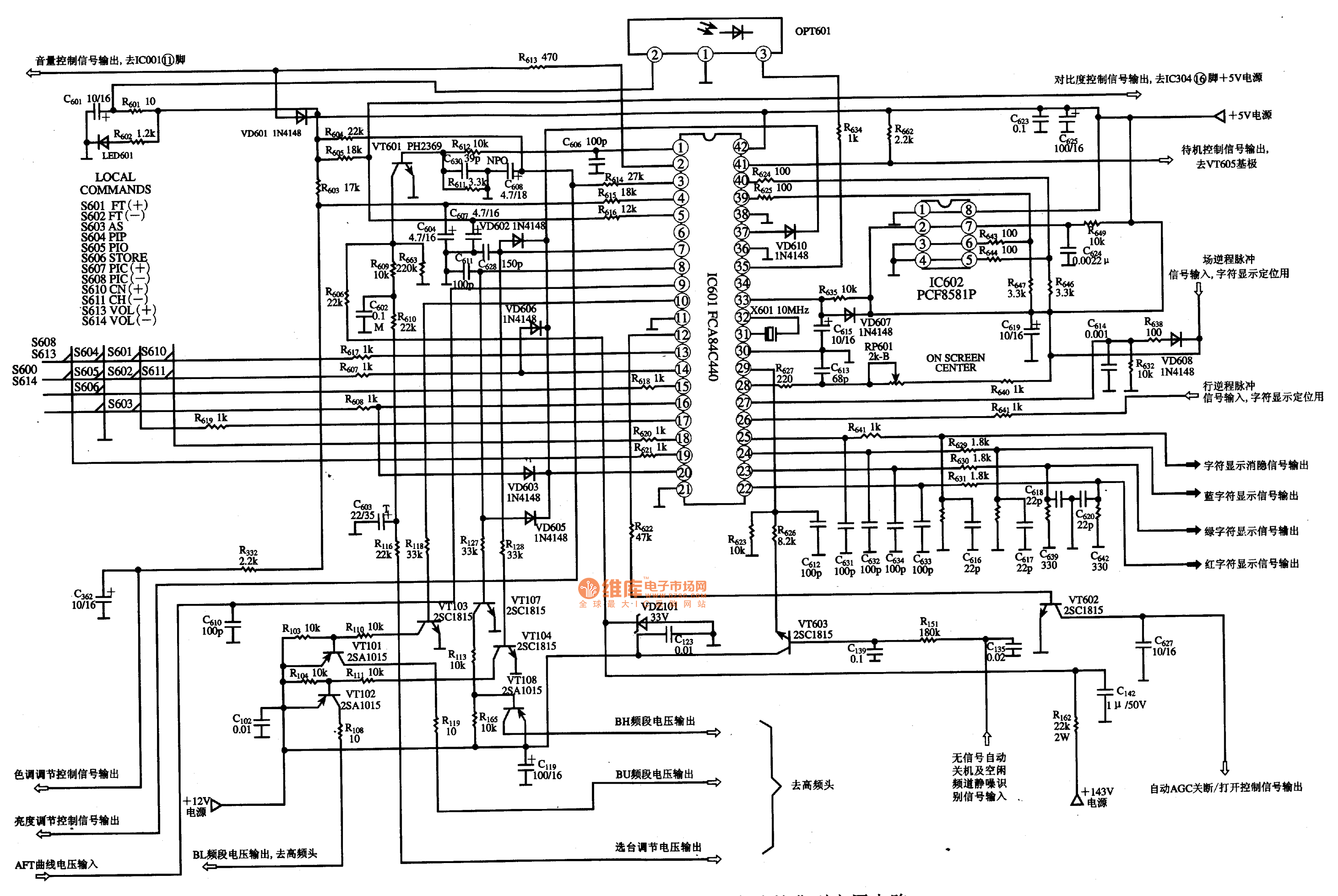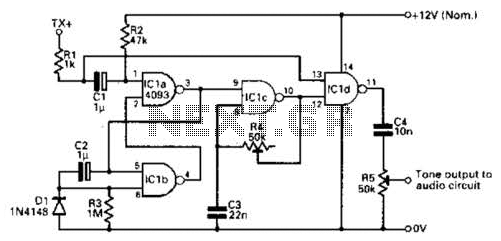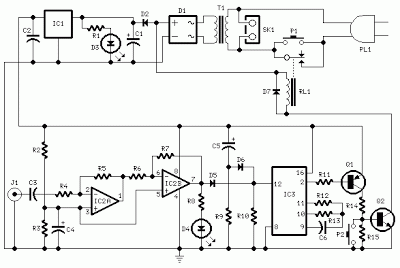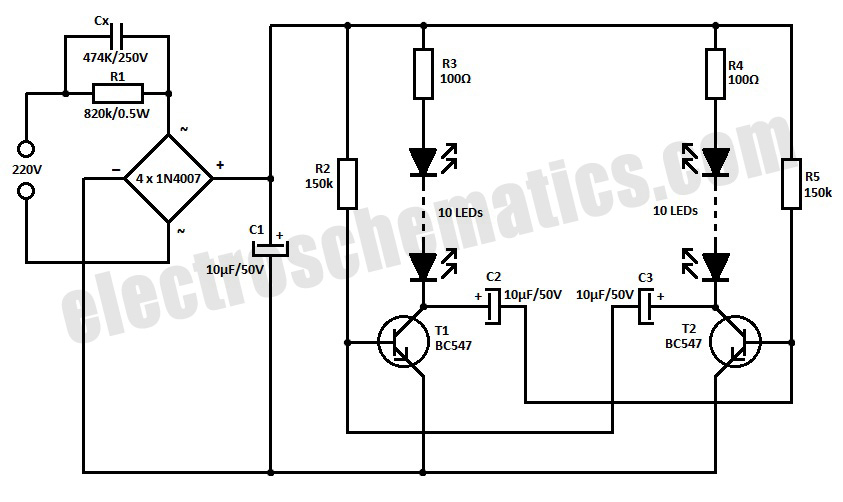
Cat toys electronic circuit
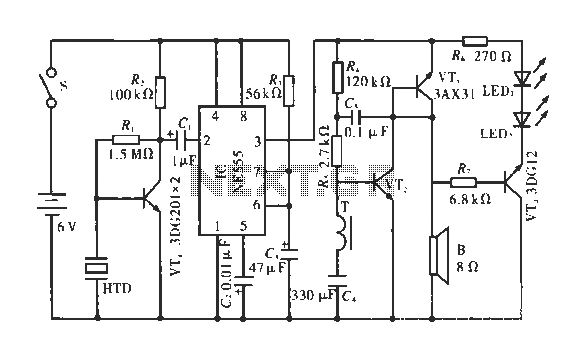
The circuit operates by detecting a clapping sound through a piezoelectric ceramic sensor, which converts the sound into an electrical signal. This signal is then amplified by the transistor VT1 and fed through a coupling capacitor C1 to the base of a 555 timer IC, specifically connected to pins 2 and 3, which are responsible for generating a high output signal. In this configuration, transistors VT2 and VT3 form an oscillator circuit that powers a speaker, producing a meowing sound.
The described circuit utilizes a piezoelectric ceramic sensor to capture acoustic signals, specifically the sound of clapping. The piezoelectric effect allows the sensor to convert mechanical stress from the sound waves into an electrical voltage, which is then processed by the circuit. The initial electrical signal generated by the piezoelectric sensor is often weak; therefore, it is amplified using transistor VT1. This amplification is crucial for ensuring that the subsequent components receive a sufficiently strong signal for further processing.
The amplified signal is coupled to the base of a 555 timer IC through coupling capacitor C1. The 555 timer is configured in a monostable or astable mode, depending on the intended application. In this case, the configuration appears to be set to generate a pulse output when triggered by the clapping sound. Pins 2 and 3 of the 555 timer are key in determining the timing characteristics of the output signal, which can be adjusted using external resistors and capacitors.
The output from the 555 timer is then used to drive a pair of transistors, VT2 and VT3, which are configured to form an oscillator circuit. This oscillator is responsible for generating the frequency needed to drive a speaker. The output from the oscillator circuit is connected to a speaker, designated as B, which produces a meowing sound in response to the initial clapping sound detected by the piezoelectric sensor. The overall design of this circuit enables the transformation of an acoustic signal into an audible sound, demonstrating the interplay between sound detection, signal amplification, and sound reproduction within electronic circuits.Circuit works: When you clapping sound through the piezoelectric ceramic HTD people seized converted into an electrical signal fed to the transistor VT1 after amplification, through the coupling capacitor C1 to the base of the electrical path 555 2 feet, 3 feet high output power of 555 level. In this case the VT2, VT3, T, B, called oscillator consisting of cats began to give power to make T, speaker B issued meow sound.
The described circuit utilizes a piezoelectric ceramic sensor to capture acoustic signals, specifically the sound of clapping. The piezoelectric effect allows the sensor to convert mechanical stress from the sound waves into an electrical voltage, which is then processed by the circuit. The initial electrical signal generated by the piezoelectric sensor is often weak; therefore, it is amplified using transistor VT1. This amplification is crucial for ensuring that the subsequent components receive a sufficiently strong signal for further processing.
The amplified signal is coupled to the base of a 555 timer IC through coupling capacitor C1. The 555 timer is configured in a monostable or astable mode, depending on the intended application. In this case, the configuration appears to be set to generate a pulse output when triggered by the clapping sound. Pins 2 and 3 of the 555 timer are key in determining the timing characteristics of the output signal, which can be adjusted using external resistors and capacitors.
The output from the 555 timer is then used to drive a pair of transistors, VT2 and VT3, which are configured to form an oscillator circuit. This oscillator is responsible for generating the frequency needed to drive a speaker. The output from the oscillator circuit is connected to a speaker, designated as B, which produces a meowing sound in response to the initial clapping sound detected by the piezoelectric sensor. The overall design of this circuit enables the transformation of an acoustic signal into an audible sound, demonstrating the interplay between sound detection, signal amplification, and sound reproduction within electronic circuits.Circuit works: When you clapping sound through the piezoelectric ceramic HTD people seized converted into an electrical signal fed to the transistor VT1 after amplification, through the coupling capacitor C1 to the base of the electrical path 555 2 feet, 3 feet high output power of 555 level. In this case the VT2, VT3, T, B, called oscillator consisting of cats began to give power to make T, speaker B issued meow sound.


